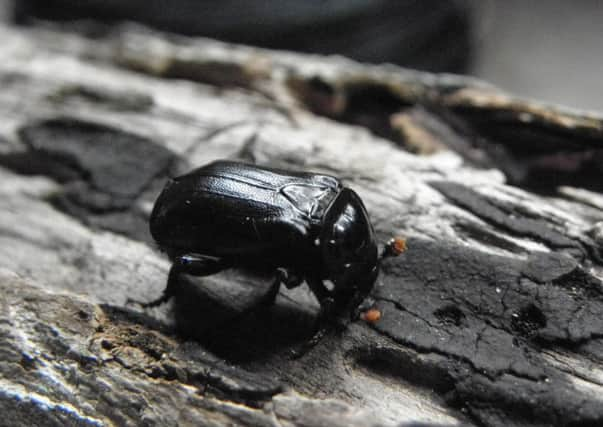Outdoors: The interesting black sexton beetle


On the other hand, the moth trap has been little visited, thanks to cold nights and too much wind. Although there were few moths at the weekend, other insects seemed to be attracted to the powerful light, giving me something different to look at. As well as the myriads of gnats, there was one early crane fly, an ichneumon fly, several mayflies and most interesting of all – a black sexton beetle going by the scientific name of Nicrophorus humator.
I popped it into a small jar until I was ready to have a proper look at it, after I had done my moths. It was easy to identify as it is the only all black burying beetle with bright orange tips to its antennae, which it uses to locate any dead bodies of small animals or birds.
Advertisement
Hide AdAdvertisement
Hide AdIf you are about to eat your tea, it might be wise to read the next bit later!
The adults bury carrion and small dead animals as food for themselves and their larvae. Adults are most commonly seen between April and October. The beetles usually arrive singly at carrion. The first male and female will fight off later arrivals. Then they bury the carcass by removing the soil beneath it. They frequently skin it and may even amputate limbs to make the burying easier. Next the female digs a small passage off from the carcass and lays her eggs. Then she returns to feed on the corpse. She feeds the grubs by regurgitating liquid food until they can feed off the carcass themselves.
Many sexton beetles carry tiny mites on their undersides (thankfully not this one) which do them no harm. They prey on blowfly eggs and larvae and worms in dung and carrion, and use the beetles to transport them to food sources.
When I opened the jar to remove the occupant for a photo call, I was introduced to one of its more unpleasant means of defence. It had let fly with a spray of the most obnoxious stench imaginable. I managed to place it on a log ready for its picture. Its head was down and it was lethargic, so I blew gently on it to try and get it to look up. This must have triggered another defence mechanism. It suddenly burst into life, scuttled off the log, onto the table then onto the floor and disappeared into the hidden depths of the shed, never to be seen again.